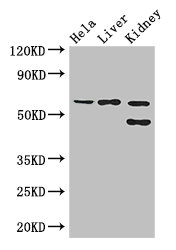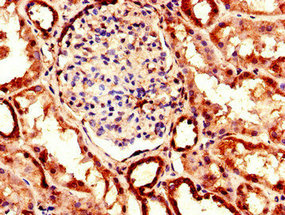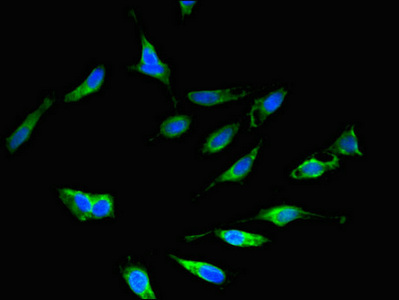Full Product Name
Rabbit anti-Homo sapiens (Human) EHD2 Polyclonal antibody
Alternative Names
EH domain containing 2 antibody; EH domain containing 3 antibody; EH domain containing protein 2 antibody; EH domain-containing protein 2 antibody; EHD 2 antibody; Ehd2 antibody; EHD2_HUMAN antibody; EHD3 antibody; FLJ96617 antibody; PAST 2 antibody; PAST homolog 2 antibody; PAST2 antibody
Species Reactivity
Human, Mouse
Immunogen
Recombinant Human EH domain-containing protein 2 protein (401-543AA)
Immunogen Species
Homo sapiens (Human)
Conjugate
Non-conjugated
The EHD2 Antibody (Product code: CSB-PA873710LA01HU) is Non-conjugated. For EHD2 Antibody with conjugates, please check the following table.
Available Conjugates
| Conjugate |
Product Code |
Product Name |
Application |
| HRP |
CSB-PA873710LB01HU |
EHD2 Antibody, HRP conjugated |
ELISA |
| FITC |
CSB-PA873710LC01HU |
EHD2 Antibody, FITC conjugated |
|
| Biotin |
CSB-PA873710LD01HU |
EHD2 Antibody, Biotin conjugated |
ELISA |
Purification Method
>95%, Protein G purified
Concentration
It differs from different batches. Please contact us to confirm it.
Buffer
Preservative: 0.03% Proclin 300
Constituents: 50% Glycerol, 0.01M PBS, PH 7.4
Tested Applications
ELISA, WB, IHC, IF
Recommended Dilution
| Application |
Recommended Dilution |
| WB |
1:500-1:5000 |
| IHC |
1:20-1:200 |
| IF |
1:50-1:200 |
Storage
Upon receipt, store at -20°C or -80°C. Avoid repeated freeze.
Lead Time
Basically, we can dispatch the products out in 1-3 working days after receiving your orders. Delivery time maybe differs from different purchasing way or location, please kindly consult your local distributors for specific delivery time.
Description
The EHD2 antibody is prepared by immunizing rabbits with the recombinant human EHD2 protein (401-543AA) and by purifying rabbit antiserum by protein G. It is a polyclonal antibody and exists an unconjugated IgG. Protein G purified EHD2 antibody reaches up to 95% in purity. It is reactive with human and mouse EHD2 protein. The target protein EHD2 is a dynamin-related ATPase located at the neck of caveolae and negatively regulates caveolae-dependent lipid uptake and plays a role in caveolar stability and dynamics for lipid homeostasis and obesity. This EHD2 antibody is suitable for the detection of ELISA, WB, IF, and IHC applications.
Usage
For Research Use Only. Not for use in diagnostic or therapeutic procedures.







